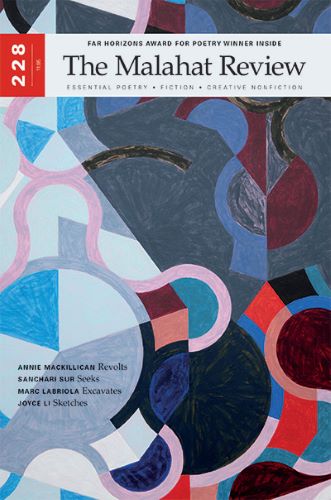Cold Mountain Review – Fall 2009
Volume 38 Number 1
Fall 2009
Biannual
Sima Rabinowitz
A semi-annual from Appalachian State University in Boone, North Carolina, Cold Mountain Review features writers with substantial and impressive publication credits and accolades, but who are still, in many cases, at “emerging” stages (few, if any, books published). The work tends to favor people/characters/personalities over ideas or philosophies, including many family stories and profiles of individuals. This issue includes the work of two-dozen poets, three fiction writers, and one essayist.
A semi-annual from Appalachian State University in Boone, North Carolina, Cold Mountain Review features writers with substantial and impressive publication credits and accolades, but who are still, in many cases, at “emerging” stages (few, if any, books published). The work tends to favor people/characters/personalities over ideas or philosophies, including many family stories and profiles of individuals. This issue includes the work of two-dozen poets, three fiction writers, and one essayist.
Philips Gerard’s “O Canada,” a coming of age, evading the draft story, which opens the issue, sets the tone and the standard for the issue: “Canada was just a place in somebody else’s story until Dad pressed a knot of bills into my palm and closed my fist over it with both hands, like it was getaway money. Outside, the yellow Falcon was already gassed and packed with a cooler of Easter ham leftovers and Cokes, and in the trunk were Quebec tags with current registration.” You want to know who these people are, why they are traveling, and how you can go along for the ride.
Family stories, whether in prose or verse, by Daniel Pinkerton (the best known name in the TOC), Dan O’Brien, Karen Holmberg, Toni Thomas, Lory Bedikian, Jenn Williamson, Christine Rikkers, and Matthew Cashion are similarly effective with realistic and credible detail, tender attention to character, and sometimes surprising resolutions. Paul Foster’s essay, “The Environmentalist,” about an intruder in his home during the post Katrina period in New Orleans, is well composed and engaging.
While there are few poems about our relationships with the natural world or which tackle philosophical, linguistic, or metaphysical preoccupations, Robert Parham’s “What the Winter Says” does the work of combing some, if not all, of these larger concerns:
this spring the outburst that chases
itself away on a trailing breeze, reminder
the way some memories make small footnotes
to themselves, the way history is not a stone
we carve on, but something softer, a bar of soap
perhaps, engraved, but put out on the rising tide
to float wherever it may go…




